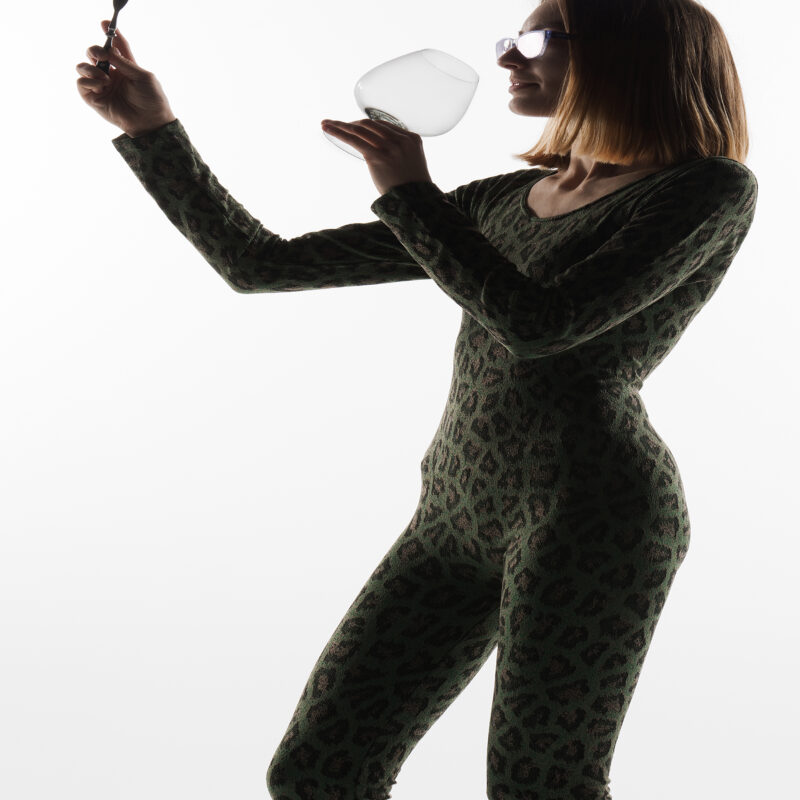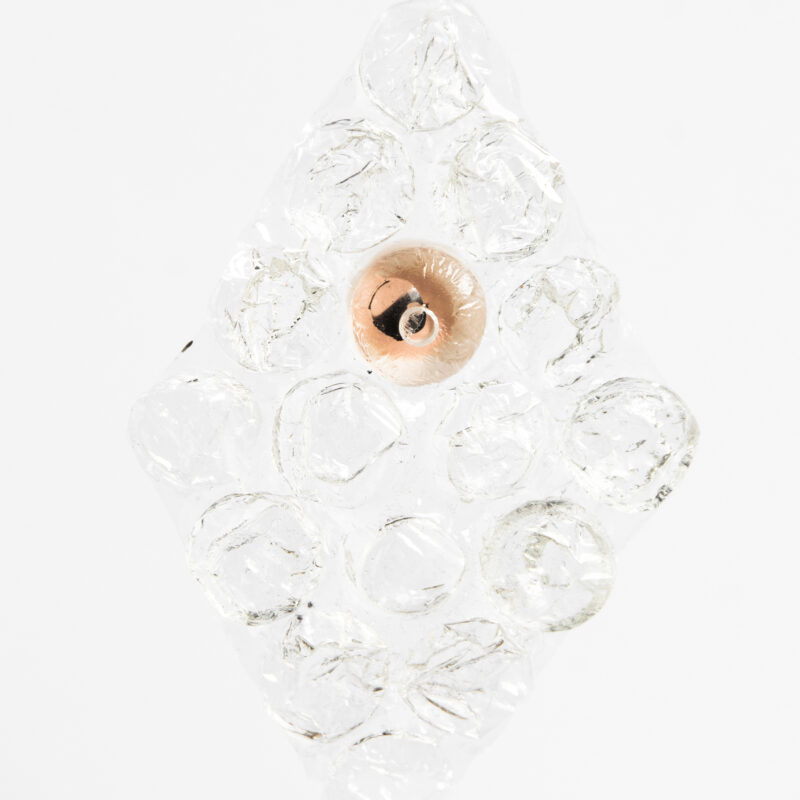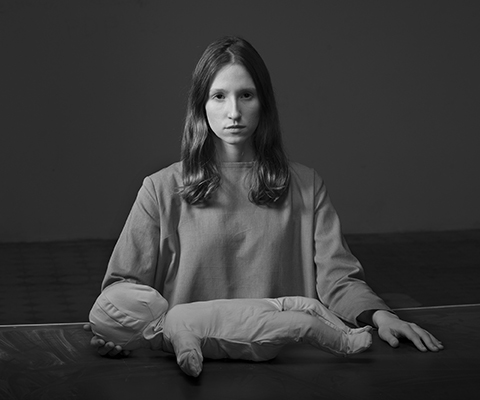Zuzanna Bartoszek, Talia Chetrit, Cocomo, Daniela & Linda Dostálková, Agnieszka Gabara, Keymo, Agnieszka Mastalerz & Michał Szaranowicz, Annija Muižule, Joanna Piotrowska, Aga Sejud, Sophie Thun, Karolina Wojtas, Marta Zgierska & Mateusz Sarełło, I Do Not Share with Anyone
Curator: Adam Mazur
Emotions cannot be photographed. Mental states, and even the most straightforward and expressive of emotions, elude the camera. In a photograph, we see a face contorted by a grimace and we think ‘anguish.’ A goofy smile indicates ‘delight.’ However, this does not suffice. Individual images merely refer to memories and recalled emotional states, while standing in the way of an accurate transmission of them. Sentenced to singularity and exclusivity, images of feelings fail to build relationships. They reproduce something, they imply something, but that something fails to penetrate below the surface of the picture.
However, many female artists—and (what a pity!) not so many male artists—seek to capture through photography more than merely things as they appear, as if in the belief that modern photography can reach for something else: a new, unknown layer. This is no mystical state of limbo. It is more about expression and sharing one’s own experiences, relationships, and emotions. Gestures and masks, productions and performances. In modern photography, this is already a current. Or, perhaps even better, a dilemma.
While thinking about the artists whom I invited to partake in this Krakow Photomonth group exhibition, I read Antoni Kępiński. In fact, the exhibition’s working title was one of the fundamental concepts in his book Anxiety: ‘the crystallisation of feelings.’ This concept was associated with the process of developing photographs and the materialisation of emotional states. Later, there was an even better-sounding English term coined by Kępiński: ‘free-floating anxiety.’ When it comes to anxiety, fear, and related depressive states, contemporary photography undoubtedly excels. But it does not end there. Hence the shift to, and borrowing of, the title of one of the works presented in this eponymous exhibition: Agnieszka Gabara’s I Do Not Share with Anyone. The artist combines analogue darkroom photography in the form of photograms with spatial installations that, among other points of reference, allude to the theory and practice of Kępiński. Sharing and refusing to share are, in their own way, Rancièrian and psychotherapeutic, and they are very much connected to the phenomenon of social-media photography, in which we were interested from the beginning.
The exhibition is divided into two sections framed by texts by the Latvian artist Annija Muižule. In her post-photographic work, Muižule begins with an analysis of the captions attached to photographs available through stock-photography image banks. Muižule’s minimalism and conceptualism contrast with the sensual self-portraits of American photographer Talia Chetrit. Chetrit’s selection introduces themes offering different ways of viewing the body, the world, and relationships. An artistic documentary work of Chetrit’s is displayed at the entrance to the exhibition, leading us into the gallery, where in the form of projections, works by artists known not only from art-gallery exhibitions but, and perhaps primarily, from the Internet, are presented. A crystallisation of photography is achieved by digging up old insta-stories, as in the case of coc0m0. Zuzanna Bartoszek is interested in flashbacks orchestrated with the use of new media, filters, and overlays. The photographic subject transforms into a lyrical object, and an object for research, observation, and actions on the border of performance. Keymo is also moving in this direction with his time-lapse session videos. Raw and cutting, these films develop a post-Internet aesthetic and combine it with a politics of the body. Among the artists showing photography or film, we have Karolina Wojtas and Agnieszka Sejud, who sometimes work together, sometimes separately. With these two artists, emotions are wrapped up with relationship disappointments, expectations, and hope. There are also elements of mockery and irony.
This difficult-to-define mix of projections, sounds, and emotions gives way to an austere, cropped, framed, and immobilised photography. The photographs of Joanna Piotrowska, whose work has its base in depth psychology—a forbidden psychology, in a way, Hellingeresque—are adjacent to staged photographs by Agnieszka Mastalerz and Michał Szaranowicz, which are inspired by W. G. Sebald’s reading of a painting by Pietro Paolini. Meanwhile, the Austrian artist Sophie Thun’s self-portrait, presented in the form of an installation, corresponds to the Garden series by Marta Zgierska and Mateusz Sarełło. The sublimation of relationships in photography has its limits and its surrealistic subtexts. The exhibition concludes with a series of photographs by the Czech artists Daniela and Linda Dostálková, whose colour images strike one as monochromatic.
One last look, at Agnieszka Gabara’s installation I Do Not Share with Anyone. A telephone placed on a chair blinks knowingly. It resembles an eye from which tears slowly drip. Maybe the artists will be able to create a new language of photography; a system of emotional references that recipients will accept. But are emotions even possible in photography? Do these images convey anything more? We do not know, we are not even interested, because we do not share with anyone.
Due to the coronavirus pandemic, the exhibition I Do Not Share with Anyone has evolved beyond its physical dimensions. The display of video and photographic work, prepared with the interiors of Krakow’s Bunkier Sztuki Gallery of Contemporary Art in mind, has dematerialised and dispersed—which is not to say it has lost its relevance, and certainly not to say that it has disappeared. With every exhibition, the most important element is the artists and the experience they catalyse with their art. We are transferring our undertaking to the Internet; to both alternative and mainstream media outlets; and to the communication channels used on a daily basis by artists themselves, as well as those who keep up with their practice. Information about happenings, presentations, and discussions, and, especially, about the works of art, will be available on Krakow Photomonth’s I Do Not Share with Anyone web portal and on the festival’s social-media channels. Eventually, everything will be disseminated through the web portal and collected into a PDF publication. A work of art for the pandemic era, to be shared with anyone who’s interested.
Adam Mazur is a curator, the editor-in-chief of Blok magazine, and a lecturer at the University of Fine Arts in Poznań. He is the author of the recently published Okaleczony świat. Historie fotografii Europy Środkowej 1838–2018 [Maimed Worlds: A History of Central European Photography 1838–2018].





